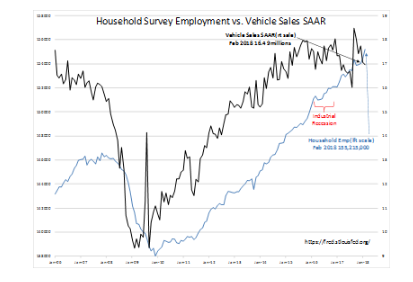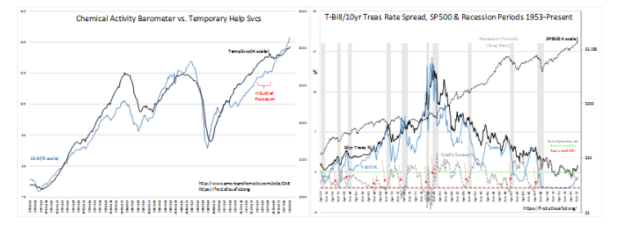“Davidson” submits:
The employment reports have again positively surprised forecasters. The Household Survey rose by 785,000. Light Weight Vehicle sales continue to hold at appropriate levels for continued economic expansion. During the early stages of economic recovery, vehicle sales are one of the first indications a new uptrend has begun. Employment follows. Later vehicle sales and employment trend together. In every economic cycle, recessions postpone large purchases including vehicle sales. Once the cycle begins an uptrend, it is postponed-sales which drive increases in sales as measured by the SAAR(Seasonally Adjusted Annual Rate). As the economic cycle progresses, the SAAR rises and manufacturers rehire the laid-off workforce. At some point the SAAR settles at a higher level for the rest of the cycle till the economy peaks. Employment continues to rise. Vehicle sales serve as an early indicator of economic upturn but are not overly useful for forecasting economic peaks. The better indicators remain the T-Bill/10yr Treasury rate spread, Temporary Help Index and the Chemical Activity Barometer(CAB).
The T-Bill/10yr Treasury rate spread has widened as rates have risen in recent weeks. The current T-Bill/10yr Treasury rate spread is in the ~1.25% range having been ~1.00% only 2mos ago. It is this rate spread which impacts lending. When this rate spread narrows to 0.20% or less, economic activity slows sharply. The wider the spread, the higher the returns for lenders and the more active the lending. Higher rates in general reflect investors seeking higher returns in asset classes outside fixed income. Rates are good measure of market psychology. The rising trends in the CAB and TempHelp Index provide good support for believing the next 12mos of economic activity are likely to be stronger than many currently believe. Recent tax law and regulation changes have yet to have full impact.
The Investment Thesis:
Current economic trends remain quite strong. The early indicators continue to provide support to believing that trends are likely to continue for at least 12mos. The new tax regime and reductions in regulations are major policy changes which are still in early stages of impacting corporate financials. Investors can expect a significant rise in equity prices in my opinion the next several years.

